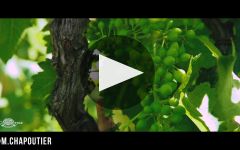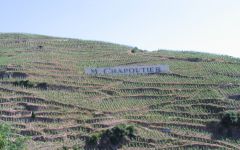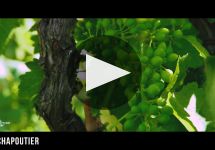M. Chapoutier Banyuls (500ML) 2008
-
Wine &
Spirits


Product Details
Your Rating
Somm Note
Winemaker Notes
Colour: from garnet red to mahogany
according to the age.
Nose: powerful, balancing between black
fruits and stewed fruits subtly brought
by cocoa aromas.
Palate: sumptuous balance between
the solar strength of the wine
and the fineness of its tannins.
It has a great persistency with sweetness
which develops greedily.
Professional Ratings
-
Wine & Spirits
This satiny grenache noir is filled with sweet cherry flavors - from the dark flesh to the almond-flavored pit. It's fresh and concentrated without the least bit of jamminess, hints of hay and stony minerality keeping it true to the locality. For a square of dark chocolate - nothing more is needed.
Other Vintages
2017-
Robert
Parker
-
Robert
Parker
-
Robert
Parker
-
Robert
Parker
-
Robert
Parker








No name is more closely associated with the greatness of the Rhone valley than Chapoutier.
The history of the Chapoutier family stretches back to the early nineteenth century when current owner Michel Chapoutier's great-, great-, great-grandfather Marius purchased an estate and some vineyards in the now famous village of Tain l'Hermitage in the Northern Rhône Valley. Marius Chapoutier made history in the region when he became the first grape grower there to vinify his own fruit. Marius had tasted wines other winemakers produced using his fruit and he realized that something was lost in translation, so to speak. He knew that he owned some of the best growing sites in the appellation and he believed — rightly — that the grapes grown in his vineyards could produce long-lived world-class wines. In a move unusual at the time, he decided that he should make the wine himself. Not only did the quality of the wines increase greatly, but this move provided the capital to expand the Chapoutiers’ already legendary estate.
A visionary and pioneer in biodynamic winemaking, his restless energy and unconditional commitment to quality have produced tremendous success, with the most 90+ point ratings of all Rhône producers and 16 "100 point" rated wines.
Sothis Gin is distilled from grapes and plants grown near the vineyards. This family domaine is cultivated using biodynamic practices in which plants play a central role. In their wild state they offer M. Chapoutier a better understanding of the soils. When used in vine treatments they help to nourish plant life and support plant growth. They have selected a few of these plants in order to offer a new perspective of their terroirs, the story of a gin originating from the Tain l’Hermitage vineyards and their floral heritage. They have been honing this recipe for many months under the watchful eye of Sothis, the star and also the ancient Goddess who teaches us that cultivating the land is a means of moving closer to the stars.

Apart from the classics, we find many regional gems of different styles.
Late harvest wines are probably the easiest to understand. Grapes are picked so late that the sugars build up and residual sugar remains after the fermentation process. Ice wine, a style founded in Germany and there referred to as eiswein, is an extreme late harvest wine, produced from grapes frozen on the vine, and pressed while still frozen, resulting in a higher concentration of sugar. It is becoming a specialty of Canada as well, where it takes on the English name of ice wine.
Vin Santo, literally “holy wine,” is a Tuscan sweet wine made from drying the local white grapes Trebbiano Toscano and Malvasia in the winery and not pressing until somewhere between November and March.
Rutherglen is an historic wine region in northeast Victoria, Australia, famous for its fortified Topaque and Muscat with complex tawny characteristics.

Unique among the vins doux naturels of Roussillon, all Banyuls wines are made predominantly of Grenache's many variants. Grenache Noir, the most respected, makes up the majority of Banyuls wines. By law it is a minimum of 50% of the blend, and 75% of the blend for Grands Crus wines. The pink-skinned Grenache Gris is next in importance, followed by Grenache Blanc and other local varieties. While the Muscat grapes are permitted, they can be present only in very small proportions.
The region itself, located in the far southern corner of Roussillon on the border of Spain, includes about 1,000 hectares of fully-exposed, sun-drenched, Mediterranean-facing terraced vineyards. These punishing conditions result in shriveled berries and concentrated juice, whose fermentation process must be arrested with fortification (locally called mutage) when the must reaches 15% alcohol. A finished Banyuls is typically about 16% with some residual sugar; without mutage, it would end up a dry wine with closer to 19% alcohol.
Some producers deliberately expose their wine to the harsh Mediterranean sunlight, set outside in glass demijohns, for an effect called rancio, similar to the effect of maderizing, or giving an overripe (but appealing) character. The bouquet on Banyuls wines typically includes aromas of baked or dried fruit and sweet spices. Red versions have the tell-tale Grenache aroma of sweet, spiced strawberries. Banyuls wines must be aged for 12 months in wood, or 30 months in the case of Grands Crus Banyuls.
